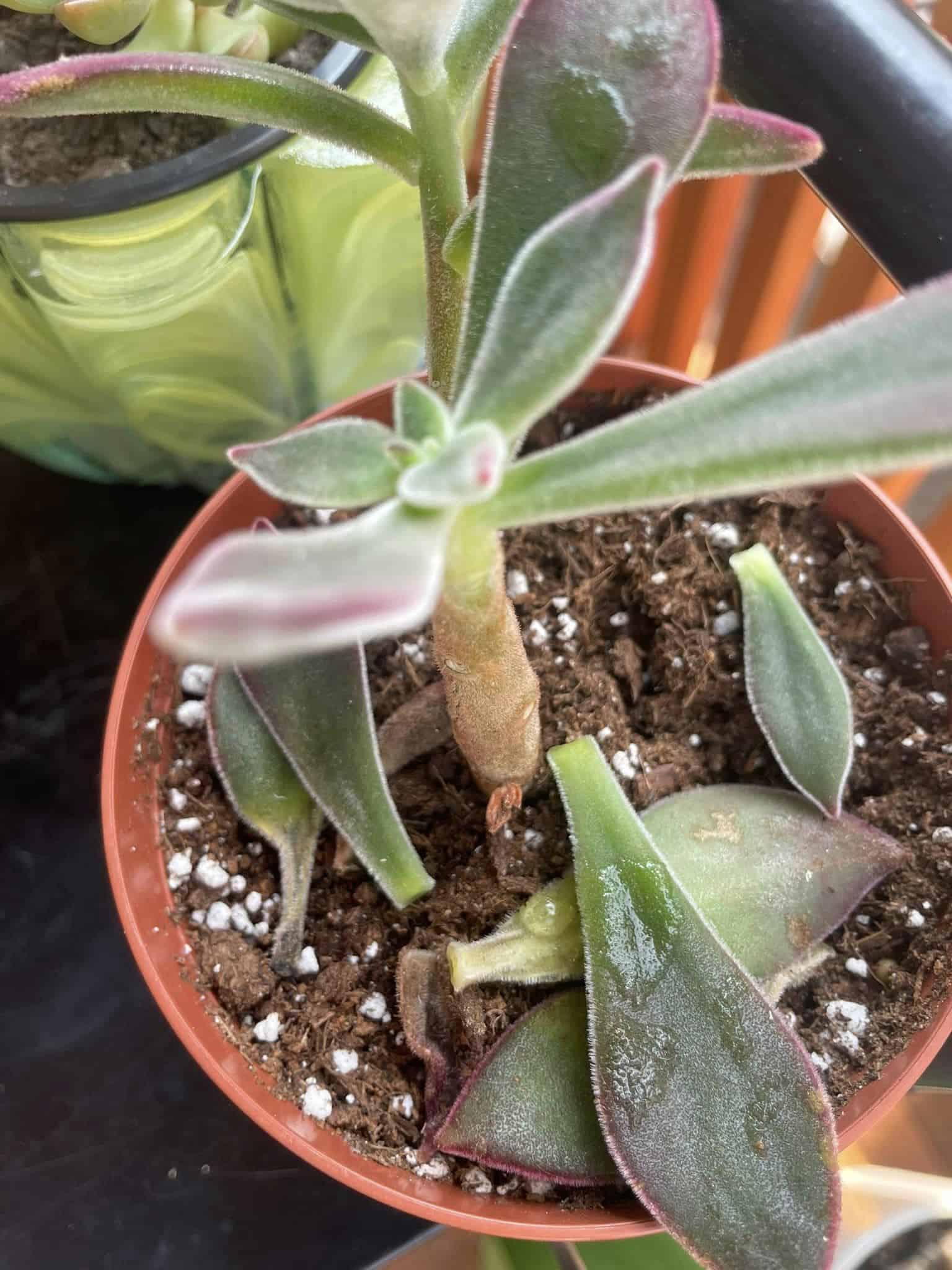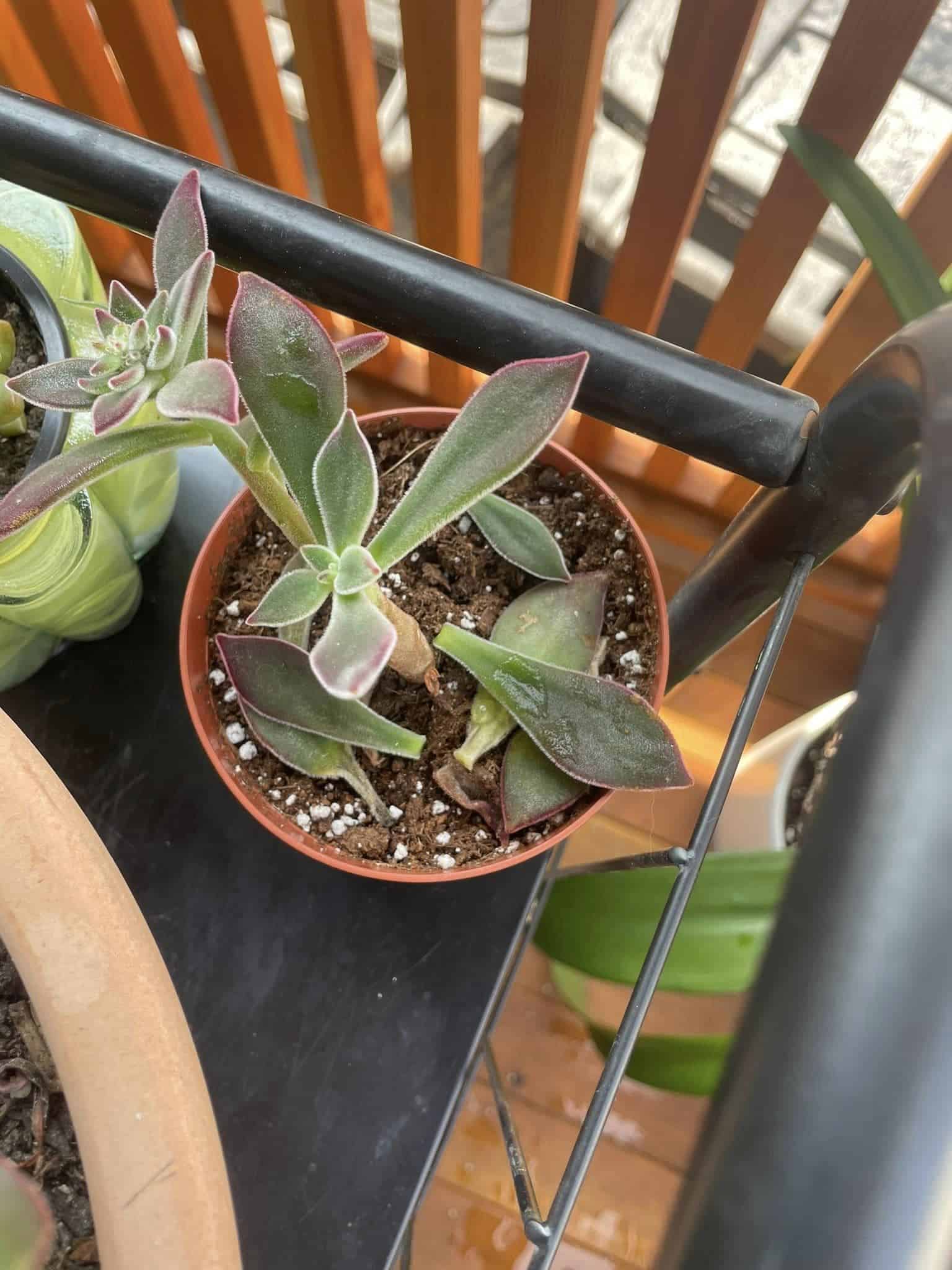Succulents like the Christmas Cactus produce beautiful, striking flowers, but the leaves are these plants’ main attraction. The leaves are thick, fleshy and come in different colors, making succulents truly unique and sought-after plants.
Considering the importance of a succulent’s leaves, seeing them fall off is the last thing you’d want to happen to your succulents, as it could mean they are dying. Luckily, you can help your plants grow their leaves back. So, how do you achieve that?
Read below and also find out why your succulent leaves are falling off.
Why Are My Succulent Leaves Falling Off?
When the leaves of your succulent start falling off, it should tell you that your plant isn’t happy and is trying to tell you something. However, since plants don’t talk, it is up to you to find out what is ailing your succulents in order to take the necessary steps to correct them.
So, what causes the leaves of succulents to fall off?
1. Overwatering
Are the leaves of your succulents plump, big, soft, yellowish, and fall off easily when touched? Chances are you have overwatered your plants. Overwatering can saturate the soil around your succulent’s roots, reducing the oxygen available to the roots. The excess water in the soil also creates a damp and favorable environment for fungal and bacterial growth, leading to root rot.
As the roots start to rot, they lose their water and nutrient absorption abilities. Consequently, your succulents respond to nutrient deficiency and stressed roots by shedding the leaves.
Related Posts:
2. Underwatering
Underwatering also leads to the same consequence as overwatering, leaf fall but for different reasons. What are they? If you deprive your succulents of water, they use the stored water to sustain themselves. As the water reserves deplete, the plant may shed some leaves to conserve energy and water.
Your succulents may also undergo “leaf senescence,” the controlled shedding of older or damaged leaves in response to water scarcity.
3. Poor Drainage
Succulent leaves falling off can be due to poor drainage as it can cause root rot, root suffocation, loss of anchorage, and stress. A stressed succulent will prioritize core functions, so it may lose some leaves to conserve energy and redirect resources to healthier parts of the plant.
4. Limited Sunlight
When investigating the causes of your succulent leaves falling off, note where you place your plants because insufficient sunlight could be the reason for this issue. Limited sunlight leads to decreased photosynthesis and subsequent changes in the plant’s metabolism.
Your plants may stretch and elongate their stems towards an area that receives ample sunlight. As the plant redirects its energy towards elongation, it can weaken the lower leaves, causing them to drop off.
5. Too Much Sun
Succulents are called desert plants for a reason- they thrive in bright light and sunny conditions. However, that doesn’t mean excessive or intense sunlight is good for them. It can damage their leaves and tissues by causing sunburn, overheating, and photoinhibition.
6. Pests and Diseases
Pests, such as spider mites, aphids, scale insects, and mealybugs, feed on the succulent’s leaves, extracting plant juices and nutrients. Their feeding activities can weaken the leaves, causing them to wither, turn yellow or brown, and eventually fall off.
Pests, like aphids and thrips, are also vectors for plant diseases that affect a plant’s health and cause leaf fall. Furthermore, succulents are particularly vulnerable to fungal and bacterial infections, and the plant may shed infected leaves as a defense mechanism to prevent further spread of the pathogen.
7. Transplant Shock
Moving your succulent from one location or container to another is necessary once it’s root bound. However, note that this process can cause succulent leaves to fall off due to the stress and disruption caused to the plant’s root system during transplantation.
8. Excess Fertilizer
Too much fertilizer can weaken your succulent and burn the roots, leading to leaves falling off and discoloration.
9. Natural Shedding
Sometimes, succulent leaf fall is a normal part of their growth cycle, so it shouldn’t be cause for alarm. Succulents shed their older leaves as they grow and produce new ones. This shedding of lower or older leaves allows the plant to reserve energy and use its resources to develop new growth.
Do Succulent Leaves Grow Back After Falling Off?
Unlike other plants that can readily regenerate new leaves from the stem or leaf nodes, succulents cannot grow leaves in the place of fallen ones. How do succulent leaves grow, you ask? Their leaves can only grow from the head and have limited regenerative abilities when it comes to detached leaves.
However, another head or offset may appear at the bald spots on your plant’s stem. In no time, the bare spots will be filled, and your succulent appear fuller once again.
Also, succulents reproduce, growing new plants from leaves or cuttings, a process known as vegetative propagation. The question is, how does propagation work? Gently remove a healthy leaf from the parent plant, place it on well-draining soil, and it will develop roots and eventually grow into a new succulent plant.
Read more: Common Problems With Succulent Propagation
How Do I Get My Succulent Leaves To Grow Back?
After noticing and getting to the bottom of the cause of leaf loss in your succulents, how do you nurse your plant back to health? You can take steps to encourage healthy growth and potentially propagate new plants.
Do this:
i) Adjust Watering
Proper watering practices are critical when it comes to succulent plant health. Water your plant excessively or too little, and it will suffer. However, keep in mind that overwatering your succulents is worse than underwatering.
Therefore, if unsure about when to water, err on the side of caution and wait until the soil has dried out before watering again.
Thoroughly water your succulents, making sure the soil is wet and the excess water drains from the drainage holes.
ii) Provide Adequate Light
Your succulents also need sufficient light. Providing your plants with enough sunlight gets tricky, especially indoors. Promote strong, vibrant growth and prevent issues like etiolation (stretching) and weak foliage by placing your succulents in areas that receive at least 4-6 hours of bright, indirect sunlight a day.
Find a location with ample sunlight without exposure to harsh, direct sunlight for extended periods for your outdoor succulents.
iii) Use Well-Draining Soil
Examine the soil your succulents are growing in since it could be causing leaf fall. Ensure it is a well-draining succulent or cactus soil mix. Also, incorporate inorganic materials like perlite, pumice, or small rocks into the soil mix to improve aeration and drainage.
iv) Propagate Healthy Leaves
Why waste healthy fallen succulent leaves when you can regrow them into new succulents? This is possible through propagation. Choose leaves that have naturally fallen off the plant or carefully remove those still attached to the plant. You want plump, firm leaves free from pests, damage, and disease.
Place the selected leaves on a dry surface, like a paper towel or a tray, in a location with good airflow to let them callus. Next, fill a small pot or a shallow tray with well-draining succulent or cactus soil mix. After that, gently place the callused leaves on top of the soil, ensuring you partly bury the end that was attached to the stem into the soil.
Water the propagated leaves sparingly and provide indirect, bright light. Wait for the new plantlets to grow several sets of leaves and strong roots, then transplant them into individual pots with well-draining soil.
v) Fertilize Sparingly
Succulents do not require a lot of fertilizers to flourish; after all, they are adapted to nutrient-poor environments. So, fertilize them during active growth seasons, usually in the spring and summer, when they will benefit most from fertilization. Avoid fertilizing in winter, as succulents don’t require as many nutrients during this time.
Most succulents are sensitive to high levels of nutrients, so using a weaker solution helps prevent over-fertilization. Therefore, dilute the fertilizer to half or a quarter of its strength.
Also, apply the diluted fertilizer to the soil, not directly on the leaves. Furthermore, do not apply fertilizer too close to the plant base to avoid burning the roots.
vi) Prune Dead or Damaged Parts
Help your succulent bounce back by pruning dead or damaged parts. Removing dead or diseased portions helps the plant allocate its resources to healthy growth and prevents the spread of diseases.
Prune with clean and sharp pruning shears or scissors that you’ve sterilized with rubbing alcohol or a diluted bleach solution to prevent the spread of any potential pathogens. Cut away the dead or damaged parts of the plant, making clean cuts as close to the healthy tissue as possible. Avoid cutting into healthy parts of the plant because this can cause further damage.
Final Take
Yes, nobody wants to see their gorgeous succulent leaves falling off. However, I hope the information in this post helps you address the issue should it happen by uncovering the cause and helping the plant grow back its leaves. Your home will then keep looking stunning with your beloved succulents.

Hey there, fellow plant enthusiasts! I’m Rachel, the green-thumbed writer behind Rooted In Garden. With a deep-rooted love for all things botanical, I’ve made it my mission to help you cultivate a thriving collection of houseplants. As a devoted plant parent myself, I understand the joys and challenges that come with nurturing these leafy wonders. Whether you’re a succulent aficionado, an orchid enthusiast, or simply adore all potted flora, join me on this journey as we explore the secrets to growing and caring for our beloved green companions. Together, let’s create a flourishing oasis indoors.


